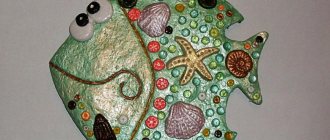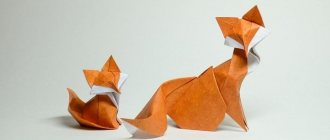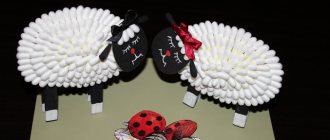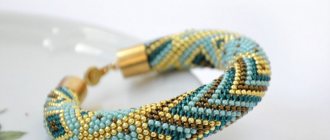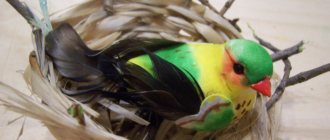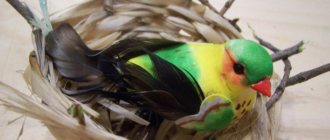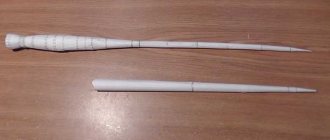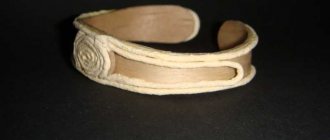How to prepare bones for a massage track
Greetings to all who stopped by! Somehow, imperceptibly, a bunch of familiar children celebrated their one-year anniversary and began to run briskly, including my princess. This means that to prevent flat feet, we need to sew massage paths for everyone. Today I will show you how to prepare bones for massage tracks. Bones prepared in this way can also be used for games with children instead of or after beans, and can also be used in educational books. There are 13 photos in this MK.
You will need: 1. Bones; 2. Enameled dishes;3. Potassium permanganate; 4. Laundry soap;5. Vinegar;6. Colander;7. Frying pan or baking sheet;8. Foil or baking paper (optional);9. Sandpaper. After a couple of months of cooking dried fruit compote, I formed this small pile of apricot seeds, plums and cherries (Photo above). In our family, we somehow don’t eat dried fruits in compote. Therefore, after preparing the compote, the delicious liquid is poured into a jug and refrigerator, and the dried fruits are chewed by the mother for seeds and thrown away. I wash the bones under waste water and put them in a metal jar until better times. Today, better times have come. I am very sensitive to the safety of children, so I carefully process the bones. To begin with, I plan out laundry soap into a basin and sprinkle a little potassium permanganate. I pour boiling water. The result is a soap-potassium permanganate solution. I immerse the bones in the solution. This is the color the solution appeared in literally the minutes that I wiped my hands, picked up and turned on the camera. Leave the seeds in the solution. I left it for about 40 minutes while I bathed my daughter. This is the color the solution acquired. I put the seeds in a colander and rinse under running water. Pour hot water and 1 tablespoon of vinegar into a bowl. I lay out the seeds and boil for about 30 minutes. It’s cool, but the kitchen doesn’t smell like vinegar. After boiling the seeds with vinegar, I put them in a colander and rinse them under running water. I put foil and bones on a frying pan (or baking sheet). I put it in the oven to dry and bake for 30-40 minutes on low heat. I periodically look into the oven and, when the bones are dry, I take them out of the oven. I put a piece of sandpaper on the table and use it to grind off the sharp corners of the apricot kernels. Plum pits and cherry/cherry pits for the most part do not need this. This work is tedious and uninteresting. And it would be better for dad to do this, but as always, he is on a business trip with us. And this NEEDS to be done! Look at the following photos on the left of the bone without processing, on the right after sanding.
From pumpkin seeds
This is another version of a cute Christmas tree with a long, downward curved tip, like a gnome's hat. To create it you will need:
- wire;
- pumpkin seeds;
- masking tape or adhesive tape on a roll;
- paper or plastic cup;
- skewers;
- glitter;
- PVA glue;
- hot glue;
- gypsum;
- braid;
- beads;
- small Christmas tree toy or ball.
To make a Christmas tree from pumpkin seeds, you need:
- Cut the wire into 5 pieces of 30 cm each.
- Place a lump of crumpled paper on the table and vertically attach a wire to it with an adhesive plaster at an equal distance.
- Gather the ends about 10 cm long together. Wrap the craft with adhesive tape, including the bottom and thin tail, bend it and leave the loop sticking out.
- Cover the shape with seeds, starting from the bottom row, making it hang slightly down. Place the grains flat. Fasten the second and subsequent rows with an overlap on the first row, in a checkerboard pattern.
- Bend the long end of the tree to the ground and also cover it with seeds - 3 per row.
- Mix PVA glue with water in a 1:1 ratio. Add glitter and cover the craft with this mixture.
- Assemble the trunk. To do this, cut the glass by a third and fill it with diluted plaster. Connect 3 skewers and insert into the center, let set.
- Decorate the pot and trunk with braid and beads, and at the foot of the future Christmas tree, place sunflower seeds and secure them with glue.
- Connect the pot to the tree.
- Hang a toy or ball on the tip.
Cool crafts from unnecessary junk: 7 top ideas
General characteristics of the plant
Plum is a fruit tree belonging to the Rosaceae family. It can often be seen in summer cottages and garden plots. Plums are planted to produce tasty and healthy fruits - drupes with juicy or dry pulp, covered with skin, and a small pit. The skin can have different colors - blue, purple, burgundy, reddish, yellow, pink. Depending on the type and variety, plums can be sweet, sweet-sour, sour, or tart.
Did you know? Knowing about the unique benefits of plums for the human body, Queen Elizabeth II of England begins her day by eating 2 fruits of the Brompcon variety, which is grown specifically for this purpose in the royal garden.
Is it possible to eat plum pits?
Plum pits are actively used in cooking and folk medicine . They do not use the whole seed, but the grain, which is located under the hard shell.
These nucleoli, when fresh, are harmful to the body, especially in large quantities, since they contain the toxic substance amygdalin. When it enters the human stomach, it is converted into hydrocyanic acid, which can cause severe poisoning. But after heat treatment they can be consumed.
We advise you to read whether you can eat plums while breastfeeding.
Planting in a pot
The process of transplanting a plum seed into a flower pot is almost identical to sowing any other plant. Not too coarse drainage is placed in an even layer at the bottom of the pot. Next, the pre-prepared substrate is poured. It needs to be watered well. The water should be warm and the soil should be well moistened.
The plum seed is planted in the middle of the pot to a depth of no more than 5-6 cm. Upon completion of planting, the flower pot is hermetically wrapped in a plastic bag and placed in a warm place. If there is good sunny weather, the pot can be placed on the window.
“Greenhouse” conditions allow the sprout to germinate already 3-6 days after planting. All these days, it is recommended, if necessary, to moisten the soil and remove condensation drops from the surface of the plastic bag.
Use of plum pits
It is known that plum kernels are a common ingredient in oriental medicine . They are part of remedies that cure bronchitis, cough, high fever, and purulent wounds. They are also used for the prevention of cancer. Most often, an alcohol tincture made from plum grains is used for treatment.
In cooking, the kernels are used in jams - compotes and jam . It is believed that if you put them in a jar, the syrup and jam will be transparent and have an appetizing color. Fruits are also often rolled whole, without removing the seeds.
Oil is also made from plum seeds . It is used for cosmetic purposes to soften and nourish the skin.
Transplantation into the ground
Experienced gardeners recommend replanting the plum seed into the soil in which the seedling will subsequently grow. A small amount of such soil is placed in a flower pot and mixed with a small amount of humus, in a ratio of ten to one, respectively.
You can also use the growth stimulants mentioned earlier. It is not recommended to use them in their pure form. It is advisable to dilute a certain amount in warm water and use it as a liquid for watering the seed.
The soil should be kept moist regularly. Otherwise, the seed will dry out without having time to sprout. When the first sprout appears, you need to care for the plum in the same way as any other indoor plant: water it on time and periodically loosen the soil.
When and where can I plant?
The plum tree is usually placed on a small flat area. Thus, the soil under the seedling will be better warmed up, and the plant will receive a large amount of heat. The tree can also be planted near the fence. But this must be the side where more sunlight falls.
Popular articles Painting from ordinary napkins
If the tree is planted in a low area, then it is recommended to give preference to a small mound, the height of which will be at least 40-50 cm and the width from 180 to 200 cm. The optimal time for planting a plum is the early months of spring.
What will you need?
In order to provide the seedling with all the necessary minerals and nutrients that will ensure its healthy and active growth, you will need to stock up on some types of fertilizers. For planting plums, you need granulated superphosphate, wood ash, high-quality compost and peat.
In the process of mulching (that is, protecting and improving the properties of the soil), manure, hay or dried grass may be required. Over time, you will definitely need a wooden peg. With the rapid growth of a seedling, it is necessary to take care of its correct direction of growth. For stability and balance, the seedling is carefully tied to a wooden stake.
Soil preparation
The close occurrence of groundwater at the bottom of the planting hole can complicate the good and healthy growth of a plum seedling. Therefore, it is recommended to get rid of this problem by making your own drainage. To do this, broken bricks, expanded clay and any available fabrics are laid in an even layer at the bottom of the pit.
Nutrient soil is laid on top of the homemade drainage from one to two buckets of rotted plant debris, one kilogram of ash and two buckets of warm water. It is worth mentioning that the presence of a high acid content in the soil can complicate the adaptation of plum seedlings to a new location. To prevent this, it is recommended to treat the acidic soil with dolomite flour before planting. Then add 5 buckets of warm water.
Requirements for the landing pit
Preparation of a planting hole for a plum seedling planted in the spring should begin in the autumn. If the tree is planted in the fall, then preparation begins 15-20 days before the intended planting. The shape of the pit can be any, but its size has strict recommendations. So, for example, the height, width and depth should be no less and no more than 70 cm. When digging, the upper surface of the soil is discarded, and the bottom of the hole is thoroughly loosened.
Description of the transplant process
After all the preparatory work with the soil has been carried out, you can begin planting. So that a seedling sprouted in a pot can successfully adapt to new conditions, and at the same time prepare for the cold before the onset of autumn, it is advisable to transplant it at the end of April:
- The pit for planting should be filled with humus and high-quality compost. It is recommended to sprinkle a small amount of sand on the top surface.
- A plum seedling is planted along with soil from the pot in which it sprouted. No fertilizer is required on the top surface of the soil.
- The soil is compacted before planting. This way, air will not be able to reach the root system. By ignoring this step, you can allow the roots to dry out.
- If necessary, tie the seedling to a wooden stake.
- The plant is watered abundantly.
The benefits and harms of plum seeds
Plum seeds can cause harm only when eaten uncontrolled and consumed fresh. When seamed, they do not pose a danger, since after heat treatment, harmful substances evaporate. Although seaming can also be harmful, but only after it has stood for more than a year. After preparation, they must be consumed within 12 months, so it is important to mark the exact date of sealing on the jar.
Important! If symptoms of poisoning are observed, a person urgently needs medical attention.
Features of creativity using natural materials
Not only schoolchildren can make crafts from cereals with their own hands, because such joint creativity is suitable even for small children. True, you will need to be with the kids constantly so that they do not harm themselves in any way.
So, the following materials may be useful to you:
- all kinds of cereals and grains - buckwheat, rice, millet, semolina;
- legumes - peas, lentils and multi-colored beans;
- any seeds and seeds - watermelon, pumpkin, melon and sunflower, etc.
You can even take it. Also in the process you will need: thick paper or cardboard, glue, scissors, fabric, plasticine, templates of various patterns, decorations (at your request).
The best DIY crafts made from cereals, seeds and sunflower seeds are appliqués and paintings. You can come up with stories with your child yourself, or use some ready-made templates and transfer them to paper. The complexity of the work should depend on the age of the children; keep in mind that the child should be interested in making the craft on his own, even with your help, but not be completely aloof.
Plum. Properties of wood. Beneficial features
Plum belongs to the Rosaceae genus. The genus (Rosaceae) has about 240 species of trees. The genus Rosaceae also includes many species of fruit trees known to us. Such, for example, as cherries, sweet cherries, peach, apricot, bird cherry and others.
It is believed that the plum appeared as a result of crossing wild cherry plum and sloe. Plum grows in northern temperate regions. The plum ranks third in prevalence in the world, about twenty percent of all fruit trees.
Plum grows up to 10 meters in height. More often, the height of the tree does not exceed three meters. The trunk diameter is no more than 40 centimeters.
Plum blossoms with white or pink flowers. It has a simple leaf with jagged edges.
From words to deeds: how to make a homemade car in 4 hours
First we will make a frame on which the car body will be installed. Our design is designed to carry a maximum of 200kg, so please keep this in mind and do not exceed the load to avoid tool breakage. Dimensions may vary, but we chose the average parameters that are most often used in gardening and construction two-wheeled wheelbarrows. Now let's move on to the selection of materials, tools and assembly of the structure.
Read also: What kind of material is EVA for shoes?
STEP 1: weld the 2 load-bearing sides together. You will need 2 metal profiles with sides 35x35 mm and a length of 140-150 cm, as well as a corner 25x25 mm 2 meters long. We lay the metal profiles opposite on a flat surface, cut off 5 corners of 40 centimeters each and lay them out between our load-bearing sides of the frame. We weld the corners on both sides to the metal profile as shown in the diagram.
STEP 2: make handles. We take a thick rubber hose with an internal diameter of 34 mm and a length of about 40 centimeters, cut it in half. A homemade garden wheelbarrow must have non-slip handles, so it is very difficult to pull the hose onto the metal profile. It must be held over the fire, constantly turning it, so that it warms up well. Then, with a slight movement of the hands (legs or improvised objects) or with the help of an assistant, we pull the hose onto the end of the frame, as shown in the diagram. The hose will cool down and it will no longer be possible to remove it. If it is difficult to tighten, you can lubricate the metal with shampoo, soap or grease - in most cases it helps.
STEP 3: weld the axle. This can be done later, but we will do it now, because it is much more convenient. We turn our frame over for a homemade wheelbarrow and weld a metal rod with a diameter of 22 mm (this is the running size for tubeless wheels). You can choose a different diameter if you have some wheels in mind for a wheelbarrow. We recommend using tubeless cargo wheels with a diameter of 40 to 50 cm - they are practically eternal.
If you want to learn how to make a garden wheelbarrow with your own hands without significant costs, then you will need to select wheels from a moped or motorcycle. You can use an old walk-behind tractor with metal wheels or a seeder as a donor. Be sure to measure the inner diameter of the bushing and only then weld the corresponding axle to the metal frame that we welded first.
Read also: Azu with potatoes recipe with photos
Plum. Beneficial features
Plum fruits contain a large amount of vitamin P, which is “responsible” for the strength and health of blood vessels, as well as for stable blood pressure. Therefore, eating plums is very healthy. Especially for those who have problems with the cardiovascular system.
Consuming plum compotes reduces cholesterol levels.
In addition to vitamin P, plums contain large amounts of potassium. Potassium in our body helps remove excess fluid from the body and promotes bile formation.
Plum fruits have a mild laxative effect, so it is useful to use for constipation and intestinal problems.
A decoction of plum leaves is very useful. The leaves contain substances that prevent the formation of blood clots on the walls of blood vessels.
Cluster of green plums hanging from the tree branch
Plum also has contraindications. Diabetics should not get carried away with eating plums. Eating plums may affect the course of gout.
Before using for medicinal purposes, consultation with specialists is necessary.
Source
Plum
House plum (lat. Prúnus doméstica) is a fruit plant of the genus Plum of the Plum subfamily of the Rosaceae family. The domestic plum originated in Romania as a hybrid of two wild species: cherry plum (Prunus ceracifera) and blackthorn (Prunus spinosa). Plum is similar in properties and structure to cherry, but the core of the wood is much darker and has a dark brown color in old trunks.
The wood of various types of plum has a characteristic macroscopic structure. It is classified as a fairly rare semi-circular-vascular core breed. It contains both single large vessels and groups of small vessels located radially. The difference in the size and number of vessels in the late and early wood of the annual layers makes them clearly visible in all sections. Depending on growth conditions, this boundary may be somewhat blurred. The sapwood is narrow, yellowish in color, noticeably different from the red-brown or dark red with a purple tint of the core, mottled with light and dark veins. Therefore, plum wood is very decorative. The annual layers form shiny, wavy stripes on a radial section, and thin, curved medullary rays form reddish shiny lines of various shapes.
Plum is a high-density species, the value of which at standard humidity ranges from 750 to 850 kg/m3 (depending on the type and growing conditions).
Plum wood dries out a lot. At the same time, it is prone to cracking and warping, and therefore requires gentle drying conditions. Among all hardwoods, plum wood has one of the highest strength and hardness values. It provides the plum with high wear resistance.
Plum wood is difficult to split, but relatively easy to process and polishes well. It glues satisfactorily and takes stains and varnishes well. There are known methods of finishing with ebony. In the open air, it is poorly resistant to biological damage. Products should be made only from properly dried wood.
The limited supply of plum wood on the market, its small size and low yield of lumber determine its scope of application, despite its rich texture, excellent color and high mechanical properties. It is used to make musical instruments, turning and carvings. It is used as a finishing material for furniture and interior elements, artistic parquet. High wear resistance makes it possible to make durable and beautiful taps for wooden barrels from it. Plum has long been known as one of the best materials for canes, billiard cues, tool handles and even batons. Both matte and glossy finishes look equally good.
There are cases where, when making exclusive furniture, it was skillfully finished in ebony. Raw, treated plum wood gives an almost correct idea of the future brightness of color and tone under varnish. The dried smear coated with varnish matches the final color and tone of the future coating. Paint adheres better to wood if you add a little (up to 3%) wood glue to the solution.
Plum
Home plum (lat. Prunus domestica) is a fruit plant; species of the genus Plum of the subfamily Plumaceae of the Rosaceae family.
Botanical description
Tree 6–12 m high (up to 15 m) with a wide or narrow ovate crown. The trunk thickness is 30–60 cm in diameter. The lifespan of a tree depends on the variety and can reach 25 years, the productive period is 10–15 years. Early-fruiting varieties begin to bear fruit in the second or third year after planting, late-fruiting varieties in the sixth or seventh year. The root system is taproot, the bulk of the roots are located at a depth of 20–40 cm.
The leaves are alternate, simple, short-petiolate, elliptical or obovate, with a crenate or serrate margin, pubescent below; length 4–10 cm, width 2–5 cm.
Flower buds are simple, producing 1–3 flowers. The flowers are white, 1.5–2 cm in diameter. The self-fertility of plums depends on the variety, but the yield always increases when there are different varieties in the plantings.
The fruit is a single drupe, purple, yellow, pale green, red, black and blue, with a bluish waxy coating. The bone is flattened, pointed at both ends. Karyotype: 2n=48.
Origin
When crossing blackthorn (Prunus spinosa) (2n=32) with cherry plum (Prunus divaricata) (2n=16), a plant was obtained that was completely identical to the domestic plum. This plant, like the domestic plum, had 2n=48 chromosomes. Probably, the wild plum turned out in this way during evolution.
The southern cherry plum has a yellow-red color, the northern blackthorn is dark blue. Their descendant combines the characteristics of both species: the cold resistance of sloe and the taste of cherry plum, and is colored in a wide range of blue-yellow-red shades (in different varieties).
The geographical center of origin can be considered the territory extending from the Eastern Caucasus to the eastern coast of the Adriatic Sea, including the Balkan Peninsula and Asia Minor.
Hybrids
For quite a long time, work has been carried out abroad on crossing plums with apricots. The hybrid between them is called a breeding cat
, and a hybrid from repeated crossing (that is, a hybrid of a plumcot and a plum) is
called a pluot
(plum - “plum”, apricot - “apricot”). Pluots have already entered commercial breeding. Since they are all created on the basis of Japanese non-winter-hardy plums, even in the Krasnodar region foreign plums do not fare very well.
In Russia, they crossed Russian plum (hybrid cherry plum) with apricot and gave the hybrid the name plumcot (the hybrid of real cherry plum and apricot is called black apricot). Plumcats are quite winter-hardy, productive, their stones are semi-detachable, and their fruits weigh about 20 g (at the level of the Kuban Comet). We have now received two new plumcats. Hummingbird (Mouse) - very winter-hardy, dwarf (the tree does not grow higher than 3 m), takes good cuttings, high-quality fruits. Plumkot Kubansky is a seedling from free pollination of the Kuban Comet with black apricot, it has high winter hardiness, the tree is low-growing, early ripening (earlier than Kolibri), and takes cuttings well. Apparently, both varieties can be suitable for the middle zone in terms of winter hardiness. Testing of these plumcats has not yet been completed.
Wheel structure, features of its installation and dismantling
Main parts of the trolley and their functions:
- The garden wheelbarrow chamber
is a storage place for compressed air. Its main functions are shock absorption and keeping the device on the go. If the tube goes flat, the constant bending of a hard tire with tread will lead to its damage. - Bearing for a garden cart
- needed to reduce friction of the wheel on the axle. In its absence, additional effort must be made to move the device for transportation, so a bearing for a garden or construction wheelbarrow is an essential part of any design. It also helps in absorbing bumps. There are 2 types of bearings - sliding and rolling. It is advisable to choose the first option. - The wheel together with the tire
ensures the reliability and performance of the trolley. Most wheels are produced using the stamping method, using a template. The characteristics in this case depend entirely on the material of manufacture and the presence/absence of coating. - The bushing
is located between the axle holder and the wheel and prevents the latter from dangling.
Wheel device
